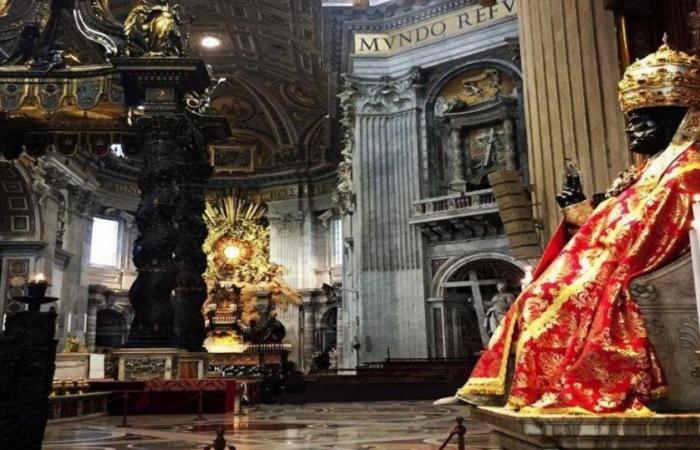June 29, feast of Saints Peter and Paul. The Patrons of Rome, but also the apostles of the faith who, both in the Eternal City, found their death during the persecutions of the first Christians, one beheaded at the Tre Fontane and the other crucified upside down (by the will of the victim who considered himself unworthy of a death like Christ) on the Vatican hill, where Caligula’s Circus was, of which the current obelisk in St. Peter’s Square, 400 meters to the west, was the center of the spine. Two of the current four papal basilicas were then built on their tombs. Even the iconography of these two historical figures – because their life and death is ascertained – is important: Saint Peter always portrayed with a round and curly beard and in his hand the classic keys to the Kingdom of Heaven given to him by Jesus and Peter, the ‘apostle of the people, with the pointed beard typical of intellectuals who holds a book and a sword in his hands.
On this day solemn mass in St. Peter’s Basilica (9.30 am) which will open with the blessing of the Sacred Pallii, those stoles made with the wool of the lambs blessed on the day of St. Agnes and then raised and shorn in the Monastery of the Three Fountains to then be woven by the nuns of Santa Cecilia in Trastevere and then placed at the vespers of June 28, in the niche of the Pallii on the tomb of St. Peter for the ancient sacredness of contact. This symbol of the weight of the lamb on the shoulders of the shepherd but also of full communion with the Pope, is worn by metropolitan archbishops only within their own diocese. Only the Pope wears it in all ceremonies. This year there are 42 archbishops who will receive the pallium (until a few years ago imposed by the Pope on this day and now instead delivered in their own diocese by a papal messenger), of which 5 are Italian, the archbishops of Foggia – Bovino; Campobasso-Boiano; Potenza – Muro Lucano – Marsico Nuovo; and Udine, Monsignor Lamba, former auxiliary bishop of Rome. The latter, also combining the office of archbishop of the ancient diocese of Aquileia, has the privilege of wearing purple like the cardinals, like – always in his own diocese – the Patriarch of Venice.
St. Peter’s Basilica is dressed for the occasion: on the large gate is placed the Fisherman’s lobster pot made of woven boxwood; at the foot of the large papal altar on the stairs leading down to the Confession is laid out – only on this day – an eighteenth-century carpet woven by the Roman Princesses; on the altar are the gilded bronze statues of Peter and Paul and the statue of Jesus handing the keys to Peter. But above all there is the statue of St. Peter dressed in pontifical vestments with the red Cope, the Fisherman’s ring and the Papal Tiara in place of the halo which is dismantled. A dressing that takes place twice a year: on this occasion and for the feast of the Chair of St. Peter.
Outside the basilica the celebration becomes popular and here from the early morning the flower display along via della conciliazione to accompany the faithful to the Angelus, while in the evening (at 9.30 pm) the great Girandola with baroque fireworks, fired from the top of Castel S. Angelo. A gift to the city and its people from ancient times.






